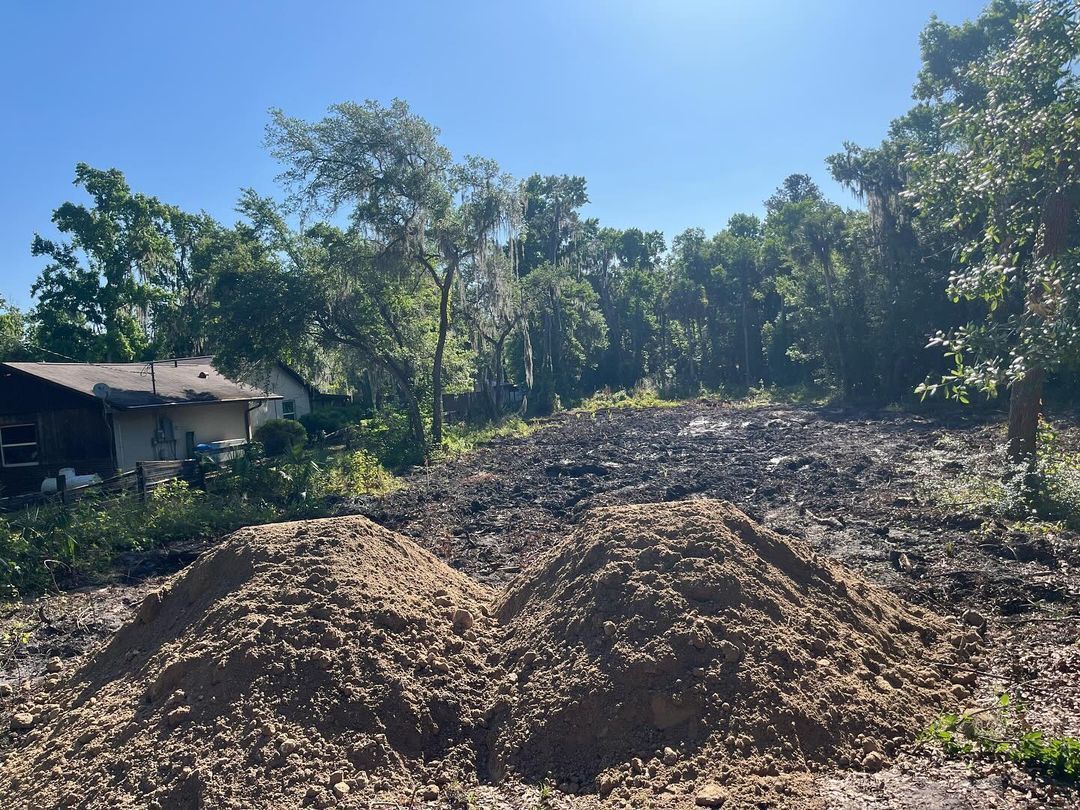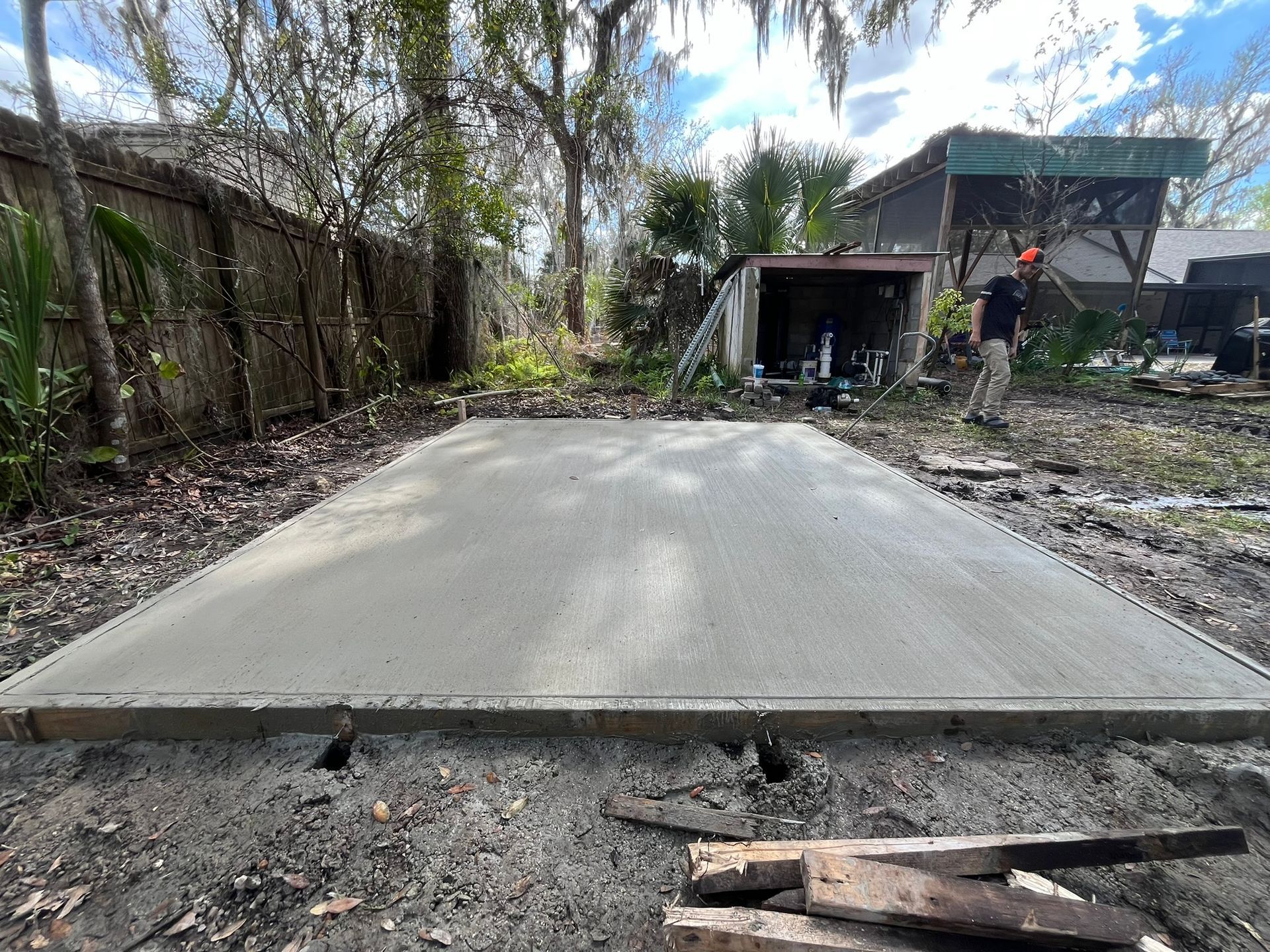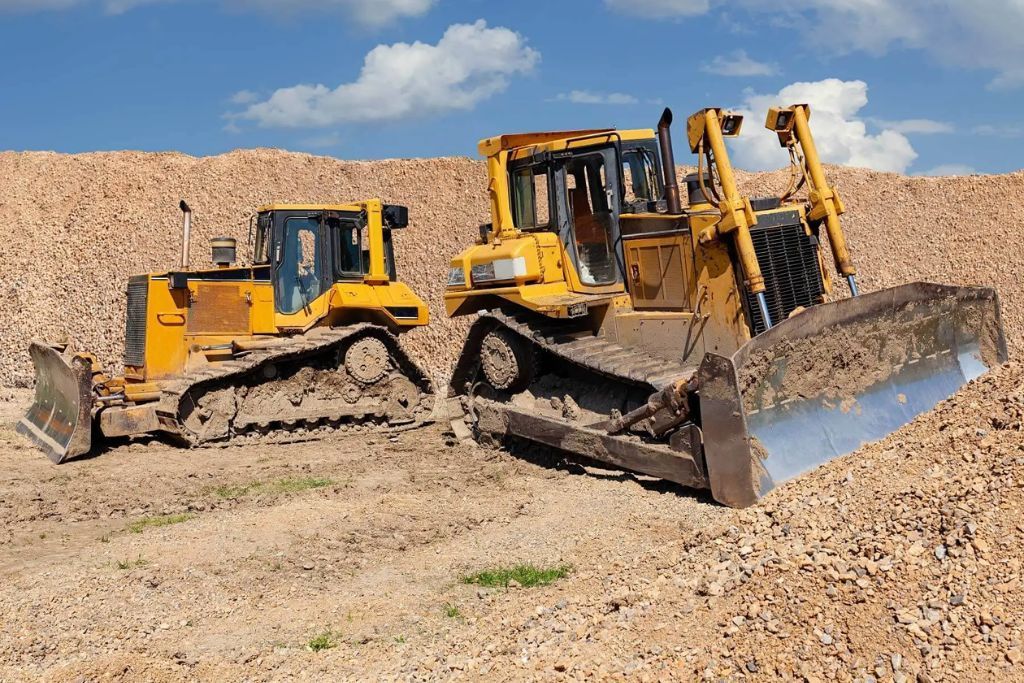How Poor Site Prep Can Ruin Your Concrete Foundation
If the ground isn’t ready before the concrete is poured, things can go wrong fast. Cracks, sinking, and water damage usually mean someone skipped site prep. In this post, we’ll show you why proper prep matters, what it includes, and how to spot problems before they get worse.
What Is Site Prep?
Site prep is getting the ground ready before pouring concrete. It’s the first step in building a strong foundation.
Here’s what it includes:
- Clear the area – Remove trees, grass, roots, and anything else in the way.
- Level the ground – Make sure the soil is flat and even.
- Check the soil – Some dirt is too soft. It has to be firm so the concrete doesn’t sink or crack later. Soil compaction tests, like a Proctor test or penetrometer reading, can confirm if the ground can handle the load.
- Add a base layer – Put down gravel or crushed stone to help support the concrete.
- Make sure water can drain – The ground should slope so water doesn’t sit under the concrete.
Site prep gives the concrete a solid place to sit. If this step is done incorrectly, the concrete can break or shift over time.
Why Does Site Prep Matter So Much?
Concrete is strong, but it still depends on what’s under it. If the ground isn’t ready, things can go wrong fast.
Here’s what can happen when site prep is skipped or done poorly:
- Cracks in the Concrete - If the dirt under the concrete moves or sinks, the slab can crack. Water can get in and make it worse.
- Uneven Floors - If the ground isn’t flat, the concrete won’t be flat either. Doors may not close right, and floors can feel slanted.
- Water Problems - If water doesn’t drain, it can sit under the slab. That can wash away the soil or lead to mold.
- Foundation Failure - In some cases, the whole foundation can shift or break. That’s hard to fix and costs a lot. This is especially risky on sloped lots or in areas with heavy rainfall.
Soil Matters: Not All Dirt Is the Same
Not all soil works for building. Some hold up a concrete foundation. Some don’t.
Here’s what to know:
- Clay soil holds water. It swells when wet and shrinks when dry. That movement can crack your foundation.
- Sandy soil drains well, but it’s loose. It must be packed down hard before building.
- Loamy soil is a mix of sand, silt, and clay. When packed, it holds steady. It’s a good base.
- Organic soil has roots, sticks, or topsoil. It breaks down and gets soft. It should be removed.
Before pouring concrete, the soil should be tested. A common test is the
Proctor test. It checks how much the soil can be packed. If it can’t hold weight, it needs to be replaced or fixed.
| Soil Type | Pros | Cons |
|---|---|---|
| Clay | Holds shape | Shrinks and swells with moisture |
| Sandy | Drains well | Needs heavy compaction |
| Loamy | Balanced and stable | May be harder to find or more costly |
| Organic | None | Must be removed completely |
The Base Layer: It’s Not Just Dirt
After the soil is cleared, a base layer is added. This is usually crushed stone or gravel.
Here’s why it matters:
- It spreads out the weight so the ground doesn’t sink.
- It drains water so it doesn’t collect under the concrete.
- It keeps the concrete from sitting directly on the soil.
The base layer should be 2 to 6 inches thick. The size depends on the type of soil and what’s being built. Driveways, garages, and heavy-use areas may need a thicker base than patios or walkways.
Once the base is down, it needs to be packed tight using a machine like a plate compactor or roller. If it’s not packed well, the concrete can crack or move later. Compaction should be done in layers (or “lifts”) no more than 6 inches deep to avoid air pockets.
Drainage: Keep Water Away
Water and concrete don’t mix well. If water builds up under your slab, it can cause cracks, sinking, or even mold. That’s why getting the drainage right is a big part of site prep.
Here’s how the pros handle it:
- They
slope the ground so water runs away from the building.
- They
add drainage pipes if water tends to collect in that spot.
- They
put a vapor barrier under the concrete to block moisture from coming up.
If the ground doesn’t drain well, it has to be fixed before the concrete is poured. If not, the concrete won’t last. It might look fine at first, but problems will show up later.
Poor drainage is one of the most common and expensive causes of foundation failure. It’s easier to fix before concrete is poured than after.
What Happens If You Skip Site Prep?
Skipping site prep might seem like no big deal. But it usually leads to big, expensive problems later. Here’s a simple look at what can happen:
| Problem | What Caused It | ow to Fix It (Not Cheap) |
|---|---|---|
| Cracks | Soil wasn’t packed well | Break and replace the slab |
| Sinking | No base or poor drainage | Lift the slab or rebuild the foundation |
| Water damage | No plan to move water away | Clean mold, fix water damage |
| Uneven concrete | Ground wasn’t graded right | rind it down or replace the slab |
All of this can be avoided by taking the time to prep the site right.
Signs of Bad Site Prep
If you already have a concrete slab and things don’t seem right, poor site prep could be the reason.
Here are some signs to look for:
- Floors feel sloped or soft when you walk
- Cracks are forming in lines or spreading like a spider web
- Doors or windows stick or don’t shut properly
- Water is pooling around the edge of the building
- Gaps under the concrete where the ground is pulling away. This often means the soil has settled or been washed away due to bad drainage.
These are red flags. They usually mean the ground wasn’t packed tight, the drainage wasn’t done right, or the base layer is missing.
How to Make Sure Site Prep Is Done Right
Before the concrete goes in, make sure the ground is ready.
Here’s what you can do:
1. Ask questions
What kind of soil is it? Are they packing it down? What goes under the concrete, and how thick will it be?
2. Look at the site
Is the ground flat? Is water sitting anywhere? Are there soft spots?
3. Hire people with real experience
A good contractor will know how to prep the site the right way.
4. Get the soil tested if needed
It costs a little but can stop big problems later.
5. Watch the weather
Do not pour concrete if the ground is wet, muddy, or frozen. Wet or frozen ground won’t compact properly, and concrete poured over it is likely to fail.
These steps are simple but important. Skipping them can lead to cracks, sinking, and extra costs.
Frequently Asked Questions
What Is Site Prep?
It means getting the ground ready before concrete is poured. This keeps the foundation strong and helps avoid future problems.
Does Soil Type Matter?
Yes, some soils are better for building than others. Clay moves a lot and can crack concrete.
How Do You Prep the Ground?
Clear the area, level it, pack it down, and add gravel. This gives the concrete a solid base.
Why Is Drainage Important?
Water can damage concrete if it sits underneath. Good drainage keeps the slab dry and stable.
Can You Pour in Sections?
Yes, as long as each section is tied together with rebar. This keeps the whole slab strong.
What Happens If Prep Is Skipped?
You might see cracks, sinking, or uneven concrete. Fixing it later is much more expensive.
Need Help with Site Prep?
Bad prep leads to cracked slabs, sinking concrete, and costly fixes. The good news is that it’s easy to avoid if the work is done right from the start. Before construction begins, we clear trees and brush, grade the land, and set up drainage to keep water away. From small residential lots in Sanford to bigger sites, we prep with care so you can build with confidence.
Contact Samuel Site Service to get started.



